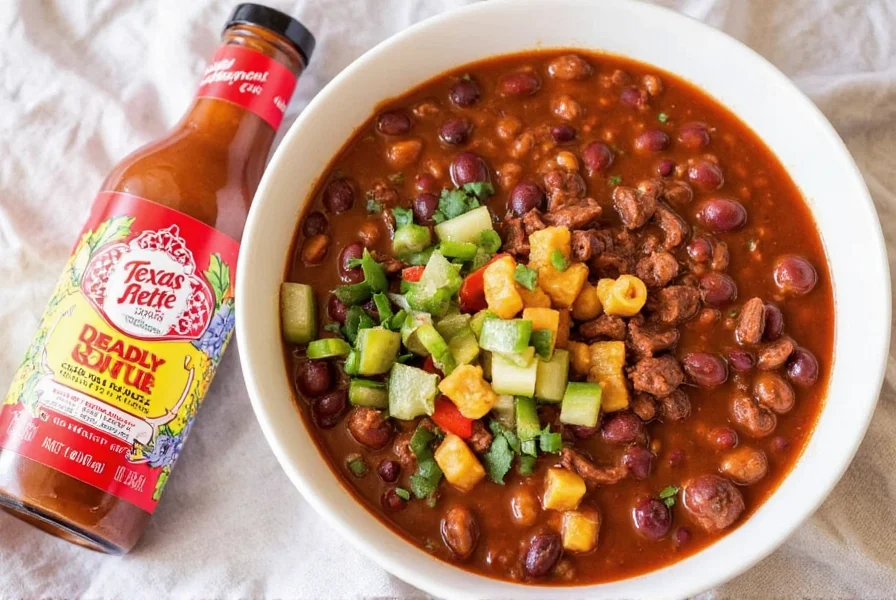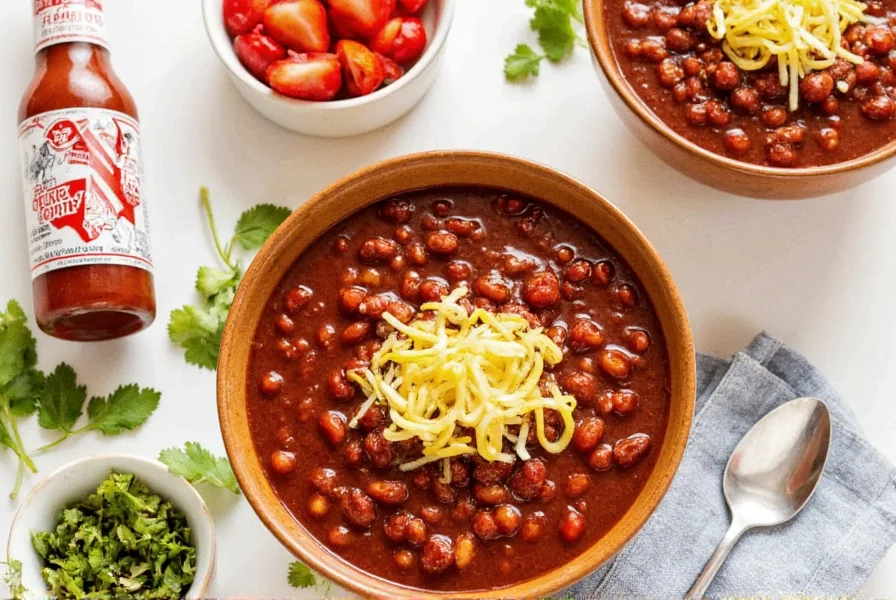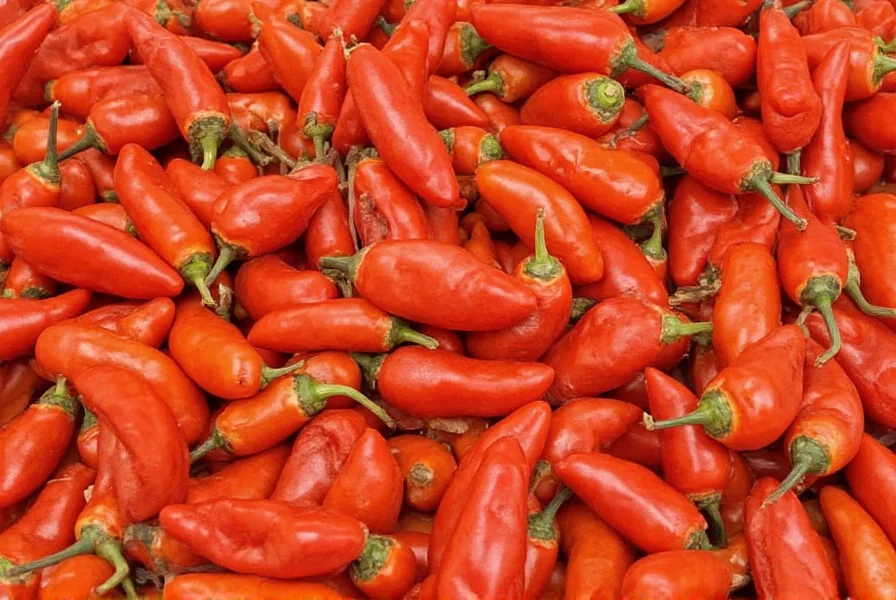Texas Pete hot sauce has become a staple in many American kitchens, particularly for enhancing hearty dishes like chili. Despite its name suggesting Texan origins, this beloved condiment actually hails from North Carolina, where it was first produced in 1929. Understanding how to properly incorporate Texas Pete into chili recipes can transform your dish from ordinary to exceptional.
Understanding Texas Pete Hot Sauce Characteristics
Before exploring how to use Texas Pete in chili, it’s essential to understand what makes this sauce unique. Texas Pete hot sauce contains aged cayenne peppers, vinegar, water, and salt—a simple ingredient list that delivers complex flavor. Unlike some hotter sauces that rely on habaneros or ghost peppers, Texas Pete provides moderate heat (around 747 Scoville units) with a distinctive tanginess from its vinegar base.
This balanced profile makes it particularly well-suited for chili applications where you want heat that complements rather than dominates the dish. The sauce’s acidity also helps brighten rich, meaty flavors in traditional chili recipes.
| Hot Sauce | Scoville Units | Best For Chili? | Flavor Profile |
|---|---|---|---|
| Texas Pete Original | 747 | Excellent | Tangy, moderate heat |
| Tabasco | 2,500-5,000 | Good | Vinegary, sharper heat |
| Cholula | 1,000-2,000 | Good | Garlicky, moderate heat |
| Sriracha | 1,000-2,200 | Fair | Sweet, garlicky |
Why Texas Pete Works Well in Chili Recipes
The chemistry between Texas Pete hot sauce and chili is remarkably effective for several reasons. First, the vinegar content helps tenderize meat during the cooking process while adding brightness to counterbalance rich, fatty ingredients. Second, the moderate heat level allows the complex spice blend in chili—typically featuring cumin, paprika, and oregano—to shine through.
Unlike some hotter sauces that can overwhelm delicate flavor balances, Texas Pete hot sauce integrates seamlessly into chili, enhancing rather than masking other ingredients. This makes it particularly valuable for traditional Texas-style chili that relies on meat and spices rather than beans.
Practical Application: Using Texas Pete in Your Chili
Knowing when and how much Texas Pete to add makes all the difference in chili preparation. For optimal results:
- Add during cooking: Incorporate 1-2 tablespoons per pound of meat during the simmering stage to allow flavors to meld
- Finish with a splash: Add an additional teaspoon just before serving to provide a fresh burst of flavor
- Adjust for meat type: Use slightly more for beef chili (2-3 tbsp per pound), less for poultry or vegetarian versions (1-2 tbsp)
- Balance with sweetness: When using Texas Pete in bean-based chili, consider adding a small amount of brown sugar to counter the vinegar tang
For those wondering how to use Texas Pete hot sauce in chili without making it too spicy, start with smaller amounts and taste as you go. The sauce’s heat intensifies slightly as chili simmers, so it’s better to under-season initially and adjust at the end.
Texas Pete Variations for Specialty Chili Recipes
While the original Texas Pete hot sauce works beautifully in most chili applications, the brand offers several variations that can enhance specific chili styles:
- Texas Pete Garlic Pepper Sauce: Excellent for white chicken chili, adding depth without overwhelming the delicate poultry flavor
- Texas Pete Hotter Hot Sauce: Ideal for those who prefer more intense heat in their beef chili while maintaining the signature tang
- Texas Pete Sriracha: Works well in vegetarian chili with black beans and sweet potatoes, providing complementary garlic notes
When substituting Texas Pete for other hot sauces in chili recipes, remember that its moderate heat means you may need slightly more than you would of a hotter sauce like Tabasco to achieve comparable spiciness.
Common Mistakes to Avoid with Texas Pete in Chili
Even experienced cooks sometimes make these errors when incorporating Texas Pete hot sauce into chili:
- Adding too early: While some vinegar integration is beneficial, adding all the sauce at the beginning can result in diminished flavor impact
- Overcompensating for mild heat: Because Texas Pete isn’t extremely hot, some cooks add excessive amounts, throwing off the flavor balance
- Ignoring regional variations: Traditional Texas chili con carne typically uses minimal sauce, while Cincinnati-style chili benefits from Texas Pete’s tanginess
- Mixing with incompatible ingredients: Texas Pete’s vinegar profile doesn’t pair well with dairy-heavy chili variations like cheeseburger chili
For authentic results when making beef chili with Texas Pete hot sauce, consider the regional style you’re attempting and adjust accordingly. Texas-style chili traditionally uses little to no tomato products, making Texas Pete’s vinegar a valuable acid component, while Cincinnati-style chili already contains significant vinegar, requiring less additional sauce.
Perfect Pairings: Ingredients That Complement Texas Pete in Chili
Certain ingredients work particularly well with Texas Pete hot sauce in chili applications:
- Dark beer: Adds malty sweetness that balances Texas Pete’s vinegar tang
- Smoked paprika: Complements the sauce’s moderate heat with deep, smoky notes
- Beef chuck: The fat content carries the sauce’s flavors beautifully
- Black beans: Hold their shape well during simmering with acidic ingredients
- Roasted garlic: Mellow garlic flavor pairs perfectly with Texas Pete’s profile
When developing your chili recipe with Texas Pete hot sauce, consider these pairings to create a harmonious flavor profile where the sauce enhances rather than dominates.

Storage and Shelf Life Considerations
Proper storage of both your finished chili and the Texas Pete hot sauce affects flavor development. Texas Pete hot sauce maintains quality for up to 2 years unrefrigerated, but once opened, refrigeration preserves its bright flavor longer. When making chili ahead of time, remember that flavors continue to develop as it sits—the vinegar in Texas Pete helps preserve the chili while allowing flavors to meld.
For meal preppers wondering how long chili with Texas Pete lasts, properly stored in airtight containers, it maintains optimal flavor for 3-4 days in the refrigerator or up to 3 months frozen. The vinegar content actually helps preserve the chili better than versions without acidic components.

Frequently Asked Questions
Is Texas Pete actually from Texas?
No, despite its name, Texas Pete hot sauce was created and is still produced in North Carolina. The brand name was chosen for marketing appeal when it was first developed in 1929, as Texas was already associated with spicy foods and bold flavors.
How much Texas Pete should I add to chili?
For most chili recipes, start with 1-2 tablespoons of Texas Pete hot sauce per pound of meat during cooking, then add an additional teaspoon just before serving. The exact amount depends on your heat preference and the type of chili you're making - beef chili typically handles more sauce than white chicken or vegetarian versions.
Can I use Texas Pete as a substitute for other hot sauces in chili recipes?
Yes, but you'll need to adjust quantities since Texas Pete has moderate heat (about 747 Scoville units). It's milder than Tabasco (2,500-5,000 Scoville), so you may need 1.5-2 times more Texas Pete to achieve similar heat levels. The vinegar content is comparable to Tabasco, making it a good substitute in recipes where acidity matters.
When is the best time to add Texas Pete to chili during cooking?
For optimal flavor integration, add most of the Texas Pete (about 75%) during the last 30 minutes of simmering, then reserve some to add just before serving. This two-stage approach allows the vinegar to mellow while preserving some fresh flavor notes. Adding all the sauce at the beginning can cause the flavor to diminish, while adding it all at the end might result in a harsh vinegar taste.
Does Texas Pete work better in certain types of chili?
Texas Pete hot sauce works particularly well in traditional meat-based chili (especially beef), Cincinnati-style chili, and bean-heavy vegetarian chili. Its moderate heat and vinegar base complement these styles without overwhelming other flavors. It's less ideal for white chicken chili or cheeseburger chili, where milder or different flavored sauces might work better.











 浙公网安备
33010002000092号
浙公网安备
33010002000092号 浙B2-20120091-4
浙B2-20120091-4